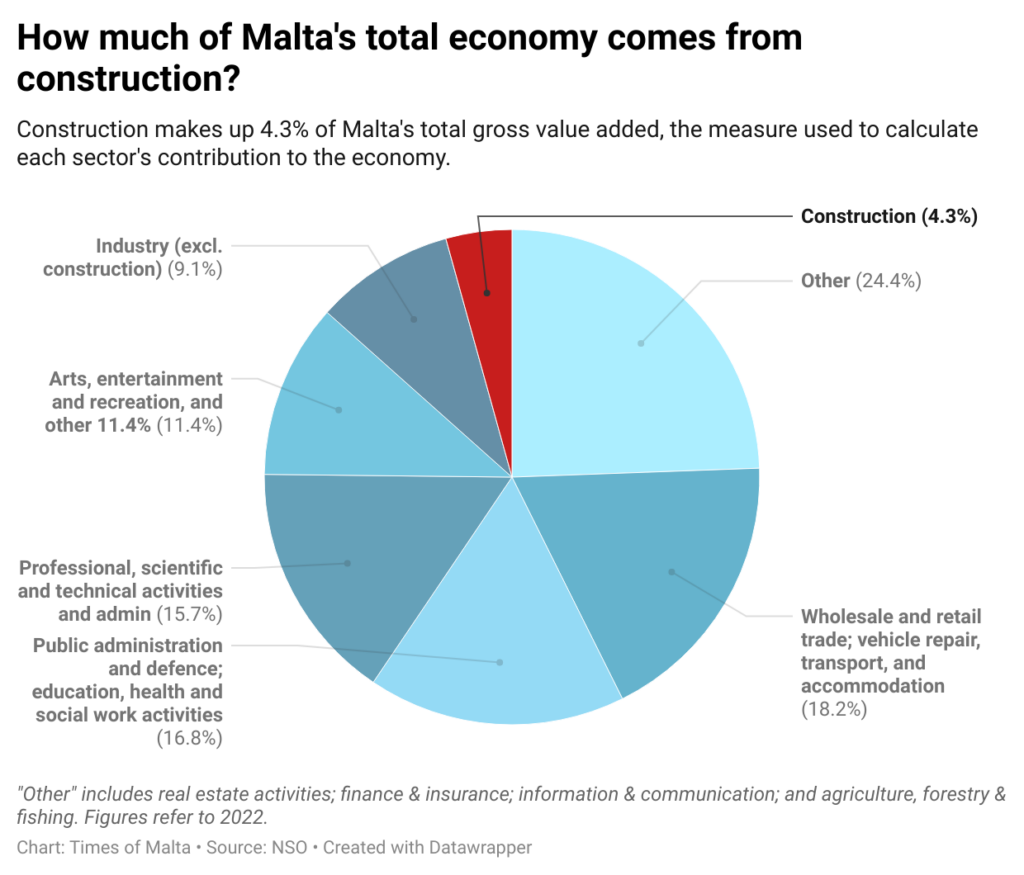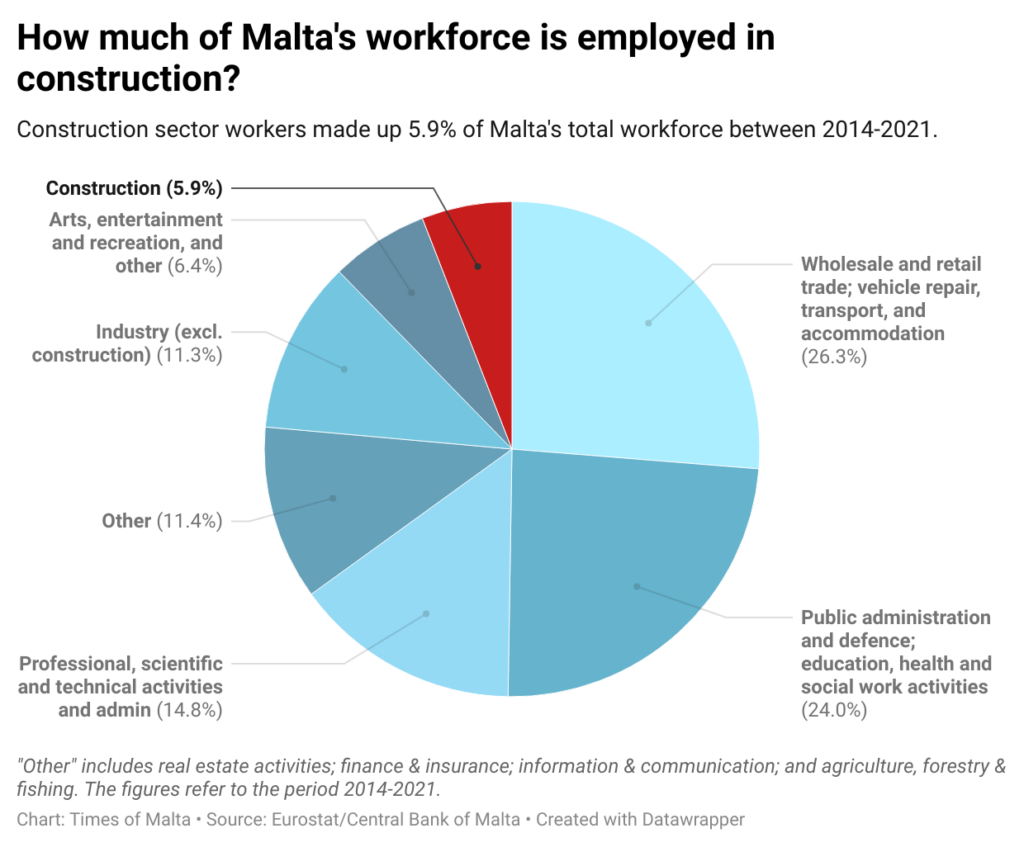In an interview with Times of Malta, Malta Developers Association president Michael Stivala warned of the negative economic impact of a slowdown in the construction industry.
Arguing for the need for further investment in business and construction, Stivala said “that is where the government gets the money to sustain health and education, infrastructure and all the other social schemes”.
Finance Minister Clyde Caruana disagreed with Stivala’s assessment, arguing that “we don’t need to sustain the current rate of construction to prosper”.
According to Caruana, Malta’s economic growth is primarily driven by other industries, including the financial, gaming and tourism sectors, rather than hinging on the construction industry.
How much does construction contribute to Malta’s economy?
A recent analysis by the Central Bank of Malta looked into the contributions of the construction and real estate industries to the Maltese economy.
The analysis measured the Gross Value Added (GVA) of these two industries in order to estimate their overall contribution in relation to other key sectors, including those listed by Caruana.
GVA measures the economic value that each individual sector contributes to a country’s overall GDP.
According to the Central Bank, Malta’s economic dependence on the construction industry appears to have dipped over the past two decades. The industry’s share of Malta’s total GVA stood at 6.1% in 2000, growing to a peak of just under 8% in 2003, before shrinking drastically between 2005 and 2007.
The sector’s contribution has fluctuated between 3.5% and 5% of Malta’s total economy since then. It stood at 4.7% in 2021, the most recent year featured in the analysis. More recent NSO data suggests that this dipped even further to 4.3% in 2022.

In total, the analysis found that the construction industry’s GVA stood at €560.1m in 2021. While this represents an increase of almost €240m over the same figure in 2000, the report suggests that other industries have grown at a faster rate over this period.
How many people are employed in construction?
Likewise, the Central Bank report found that although the number of people employed within the sector grew by 7,400 to reach 17,100 in 2021, this represents a smaller share of Malta’s workforce than it previously did.
According to the Central Bank, the construction industry directly employed 5.9% of Malta’s overall workforce during the period of 2014-2021, a slight decrease from 6.9% between 2000 and 2013.
Is the construction industry driving Malta’s economic growth?
The Central Bank’s data suggests that this is not the case.
Malta averaged annual GVA growth of 6.4% between 2014 and 2021. Of this, only 0.3% is attributed to the construction industry. The Central Bank describes that as “modest”.
In fact, the construction industry trails several other sectors in terms of its contribution to Malta’s growth. Sciences, communications, the arts and retail sectors all provide a greater share of Malta’s economic growth.

Conspicuous industries
Economist Lino Briguglio agrees with Caruana’s view that the construction industry is not the main motor of growth in Malta.
Speaking to Times of Malta, Briguglio argued that the industry’s contribution in terms of GVA regularly hovers between 4% and 5% of the total economy, behind several other industries.
Briguglio argues that even if we apply a “generous rule of thumb” and assume that the construction industry’s indirect demand – ancillary services to the sector – doubles this figure to some 8%, this is still well behind other sectors and their own respective indirect contributions.
“Construction, like tourism, is a very conspicuous industry which has a direct and visible impact on people’s lives. This leads people to assume that its economic contribution is larger than it really is.”
Briguglio also argues that the construction industry’s negative economic impacts have never been properly assessed.
“When we talk about construction’s contribution to Malta’s economy, we are not calculating how some construction projects lead to a devaluation of so many other people’s properties through things like a loss of natural light, the ruining of a streetscape or the loss of a sea view, for instance,” he argued.
Verdict
The construction industry is an important part of Malta’s economy, contributing over half a billion euro each year and directly employing over 17,000 people.
But it is not among Malta’s largest economic drivers.
Data shows that other sectors have a larger impact on Malta’s economy, either by making up a bigger share of Malta’s GDP, by employing more people, or by making a greater contribution to the economy’s growth.
However, construction has a more direct impact on people’s lives compared to many other industries, as its effects are felt more directly by the public compared to other sectors. This may lead people to believe that the sector makes up a larger share of the economy than it does in reality.
The Times of Malta fact-checking service forms part of the Mediterranean Digital Media Observatory (MedDMO) and the European Digital Media Observatory (EDMO), an independent observatory with hubs across all 27 EU member states that is funded by the EU’s Digital Europe programme. Fact-checks are based on our code of principles.
Let us know what you would like us to fact-check, understand our ratings system or see our answers to Frequently Asked Questions about the service.





